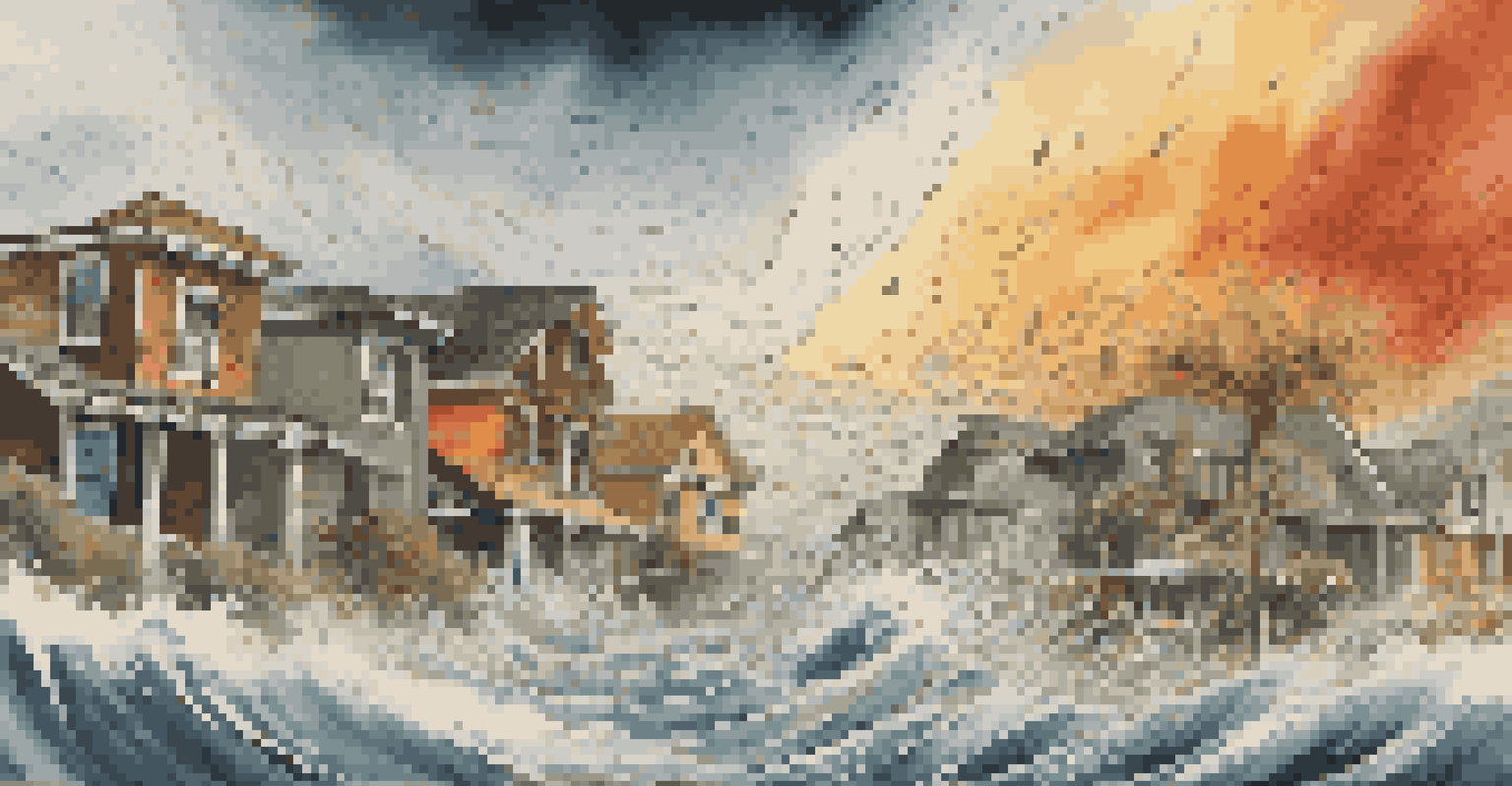Home Insurance and Natural Disasters: Coverage You Need

Understanding Home Insurance Basics
Home insurance is designed to protect your property and belongings from unexpected events. It typically covers damages caused by fire, theft, and certain natural disasters. However, the specifics of what is covered can vary widely between policies, making it essential to read the fine print.
By failing to prepare, you are preparing to fail.
Most homeowners assume that their insurance covers everything, but this is often not the case. For instance, standard policies may not include coverage for floods or earthquakes. Therefore, understanding the basics of your policy can help you identify gaps in your coverage before disaster strikes.
It's vital to regularly review your home insurance policy, especially if you've made significant changes to your home or its value. Keeping your coverage up to date ensures you’re not left high and dry when you need it the most.
Natural Disasters: What to Expect
Natural disasters can take many forms, including hurricanes, tornadoes, floods, and wildfires. Each type of disaster poses unique risks and threats to your home. Knowing what to expect can help you prepare and choose the right insurance coverage.

For example, hurricanes can cause extensive wind and water damage, while wildfires can destroy entire neighborhoods in a matter of hours. Understanding the nature of these disasters will guide you in assessing your risks and what your home insurance should cover.
Know Your Home Insurance Coverage
Understanding the specifics of your home insurance policy is crucial to identify any gaps in coverage, especially for natural disasters.
It's also important to consider your geographical location when evaluating risks. Living in a flood-prone area may necessitate additional flood insurance, while those in earthquake-prone zones might need specialized coverage.
Key Coverages for Natural Disasters
When it comes to protecting your home from natural disasters, there are several key coverages you should consider. First, dwelling coverage is essential, as it protects the structure of your home from damage. This coverage is typically included in standard home insurance policies.
You can't predict the future, but you can prepare for it.
Personal property coverage is another vital component, as it protects your belongings inside your home. This includes furniture, electronics, and clothing. However, you may need to add specific riders for high-value items, like jewelry or artwork, to ensure they are fully covered.
Finally, liability coverage can protect you if someone is injured on your property during a natural disaster. This can help you avoid hefty legal fees and medical bills, making it an integral part of your home insurance policy.
Flood Insurance: A Must-Have for Many
One of the most overlooked aspects of home insurance is flood coverage. Many homeowners assume that their standard policy includes protection against floods, but this is often not the case. In fact, flood insurance is typically purchased separately through the National Flood Insurance Program (NFIP).
If you live in a flood-prone area, this coverage is crucial. Just an inch of water can cause significant damage to your home and belongings. Flood insurance can help you recover financially, allowing you to rebuild or repair your property after a disaster.
Consider Additional Disaster Insurance
Flood and earthquake insurance are often not included in standard policies, making it essential to assess your risks and obtain necessary coverage.
Even if you don’t live in a high-risk area, consider flood insurance, as flooding can occur due to heavy rain, melting snow, or even broken pipes. It's better to be safe than sorry when it comes to protecting your home.
Earthquake Insurance: Do You Need It?
Earthquake insurance is another important coverage to consider, especially if you live in a seismic zone. Like flood insurance, this coverage is typically not included in standard home insurance policies. If you live in an area where earthquakes are a risk, investing in this type of insurance can provide peace of mind.
Earthquake insurance can cover the costs of repairing or rebuilding your home if it's damaged by seismic activity. It can also cover personal property losses, which can be significant after a quake. Understanding the terms and conditions of this insurance is essential to ensure you have adequate protection.
Even if your area hasn’t experienced a significant earthquake in years, that doesn’t mean it won’t happen again. The old saying, 'better safe than sorry,' rings especially true when it comes to natural disasters.
Creating an Emergency Preparedness Plan
Having the right insurance coverage is just one part of protecting your home from natural disasters; an emergency preparedness plan is equally important. This plan should outline steps to take before, during, and after a disaster strikes. Knowing what to do can save lives and significantly reduce property damage.
Start by identifying potential risks in your area and create a specific action plan for each type of disaster. For example, have a clear evacuation route for hurricanes and a checklist of supplies for wildfires. Sharing this plan with all family members ensures everyone is on the same page when emergencies occur.
Regularly Update Your Insurance Policy
Reviewing and updating your home insurance policy at least once a year ensures it reflects any changes in your home and surrounding environment.
Don't forget to regularly practice your plan. Conduct drills for various scenarios to ensure everyone knows their roles and responsibilities. This preparedness can make all the difference when seconds count.
Reviewing and Updating Your Coverage Regularly
Home insurance is not a 'set it and forget it' purchase. Life changes, such as renovations or new purchases, can impact the amount of coverage you need. It's essential to review your policy regularly, at least once a year, to ensure it meets your current needs.
Additionally, keep an eye on changes in your area, such as new construction or environmental changes, which may affect your home's risk profile. These changes could warrant additional coverage or adjustments to your current policy.

By staying proactive and informed, you can ensure that your home insurance policy provides adequate protection against natural disasters, giving you peace of mind in uncertain times.